Above: A bee on the monarda fistulosa, a native bee balm.
Ann Asadorian’s wildflower meadow – what she calls her pollinator meadow – is not in the most likely of locations. To find it, you drive west on Middle Road and turn left into The Woods neighborhood. You wind your way past large houses with immaculate lawns until you can go no farther. There’s a retention pond in front of you, but to your left, you’ll see Ann’s experiment — a wildflower meadow with different varieties of native (and near-native) plants that are just what pollinators our little corner of southeastern New England need to thrive.
This is not Blithewald or Monet’s garden. This is a subtler thing, especially because this meadow is in its early years. Asadorian has created this meadow with the help and extensive expertise of George Christie, a native plant specialist who worked at Wildwood Nursery until a few years ago. That’s how they met – George advised Ann and her husband, Guy, on the landscaping for their house, which sits up the drive beyond the meadow. Asadorian and Christie talked a lot about native plants – a passion of Christie’s that dovetailed with Asadorian’s growing awareness of the need to give local pollinators, everything from bees and wasps to hummingbirds, bats and butterflies, the local plants they thrive on.
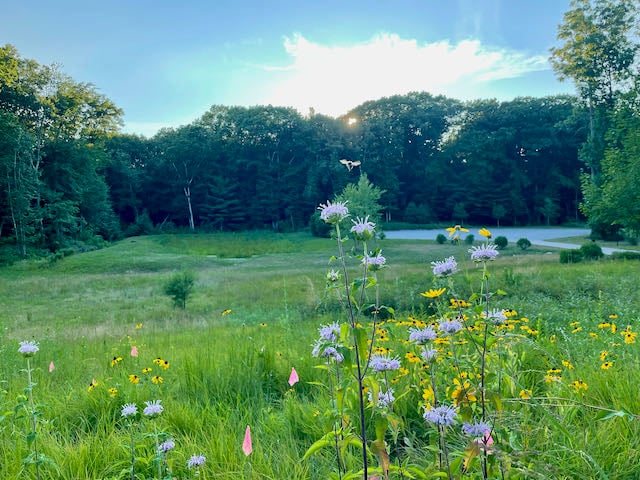
The meadow in July.
The idea for the meadow came about a few years later. Christie harvests seeds from native plants, grows seedlings, and then plants them. He was running out of space in his Potowomut yard for his wildflower seedlings, and he reached out to Asadorian to see if she was up for trying a wildflower meadow. They both knew the spot. It would go on the slope heading up toward the house, an open expanse with poor soil but plenty of sun.
The first year was 2020; they planted around 70 seedlings that spring. The idea was to create a truly sustainable wildflower meadow that would not need to be coddled. As Christie explained, tough soil needs tough plants. The lovely varieties found in garden stores, even the natives, would need a lot of hand holding since they are grown in optimal conditions. Asadorian does, however, water the seedlings their first summer and she sprays the area around the newer plants with a smelly deer deterrent. But they did nothing to amend the soil, which is largely a repository of construction detritus.
Year one was dry, year two – where they planted another 50 or so seedlings – was pretty wet, and then there was this year, year three, dreadfully dry.
For Christie and Asadorian, a dry year could mean some plants die but more likely it just means blooms don’t last as long, as plants work to conserve their energy. And the native plants in this meadow are largely drought tolerant. “All of the plants in this area thrive on poor soil and low moisture,” said Christie. “Our specific goal here is to try to create a more enhanced summer garden using native plants. Some of these plants wouldn’t do well with a lot of moisture mainly because then they would have more competition from moisture loving plants.”
“You want to help it a little but you want them to create their own environment,” Asadorian said.
You won’t find echinacea in the meadow (at least not deliberately) and there are reasons for that, Christie said. “One, the deer love it. They will wipe it out. Another thing is, it’s not native to Rhode Island. It’s one of those near-natives. But the main thing from our viewpoint is, it’s very very common in gardens. One of our goals is planting plants that are less common.”
Pollinators and pollinating insects that love coneflower (i.e. echinacea) can find it all over the place, he explained. “Whereas they don’t necessarily find much wild bergamot. Black-eyed susans are around but the blue verbena is not.”
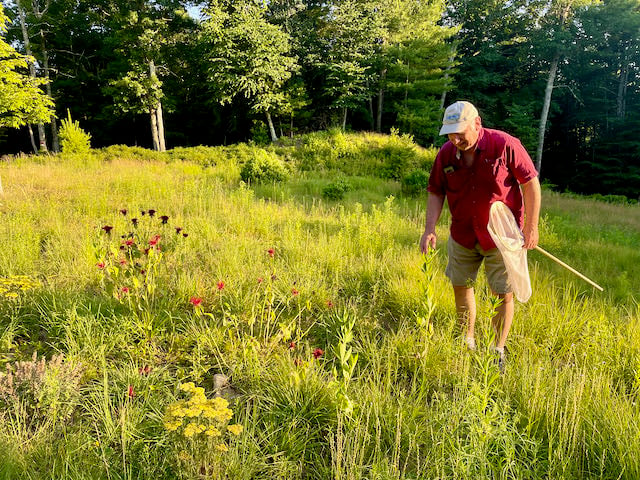
Native plant specialist George Christie inspects new flowers.
During a visit to the meadow in mid-summer, Asadorian pointed out tiny daisies that didn’t shout out the way larger, more traditional daisies do. “We got a lot of these tiny daisies this year, which I love, the very dainty little flowers,” she said. “Some are hard to see until you really look.”
The sedges and dryland grasses did well this summer, Christies said, and goldenrod later in the summer. “It’s beautiful,” Asadorian said.
They planted milkweed seedlings last year from seeds harvested from the milkweed on the other side of the drive. But, said Christie, milkweed takes a long time to get going. “A plant that has done very well in this summer’s heat has been Asclepias verticillata –whorled milkweed, which I had thought wasn’t really doing anything, but it took off this year. A repeated lesson with wildflowers is they can take longer to get established because they haven’t been bred for quick results. Patience is an annoying virtue!”
Of the native plants, Christie said the black-eyed susans have done the best – “no surprise” – but the vervain, early sunflower, and hairy beardtongue are doing well also. “Of the grasses the panic grass is doing best. The false blue indigo has started to take off, but the sundial lupine is still iffy. In the drainage basin area we’ve had good luck increasing the vervain, wild bergamot and foxglove digitalis and have introduced cardinal flower, monkey flower [Mimulus ringens] and joe-pye weed.”
“One of the things I’ve been learning is these kinds of plants don’t like fertilizer. They are dry, poor-grass, poor-soil plants for the most part and fertilizer typically just makes them grow real tall and spindly and not very strong,” he said. “I’ve added a little woodchip mulch but we haven’t added any fertilizers whatsoever. A lot of your garden plants are bred to sort of need that fertilizer to produce a lot of flowers. Because these plants haven’t been bred that way, fertilizer for the most part just goes into height.”
Christie said it doesn’t take much to help reestablished native pollinators.
“People ask, how many native plants do I need to plant to make a difference? The answer is one,” he said. “Truthfully, the change isn’t in the plant, it’s in the person. Once you’ve done it one time, and sat there and looked at all the things that are on it, you’re going to plant another one. It’s a change in attitude. It’s not a change in gardening style. There are native plants all over the garden center. You just need to look. As soon as you start, you’re making a difference. You’ve changed the way you look at your garden. Am I imposing my will on the world or is it us learning to live together? That’s the important thing.”
For Asadorian, this was something she could do. Although her grandfather has a big farm in Maryland, she has no background in this.
“I think this just pulls at me based on the times we’re living in. I have this space and I can do something to make a difference. For me it’s more a labor of love. This isn’t huge…. But it means a lot, it really does. With the help of George, I’m making a difference in potentially a very small way, but it’s still a difference. I see butterflies out here. I see dragonflies. There are bees out here. Not to mention deer. I don’t mind the deer. They live here too, it’s their place.”
George Christie’s “Top 10” list of the easiest native and near-native wildflowers to grow from seed:
- Annual black-eyed susans (rudbeckia hirta) – can plant in spring
- Bee balm (monarda didyma) – likes sun
- Blue vervain (verbena hastata) – likes sun, can handle damp soil
- Butterfly weed (asclepias tuberosa) – likes sun
- Cardinal flower (lobelia cardinalis) – can take some shade, damp soil
- Columbine (aquilegia canadansis) – can take some shade
- Hairy beardtongue (penstemon hirsutus) – can take some shade
- Perennial sunflower (heliopsis helianthoides) – likes sun
- Swamp (rose) milkweed (asclepias incarnata) – can handle damp soil
- Wild bergamot (monarda fistulosa) – likes sun, can handle damp soil
He recommends Eco59 for seeds suitable for southeastern New England. He also recommends checking out the Rhode Island Wild Plant Society, which holds a plant sale each spring. And here are his tips for seed planting: Winter Planting.

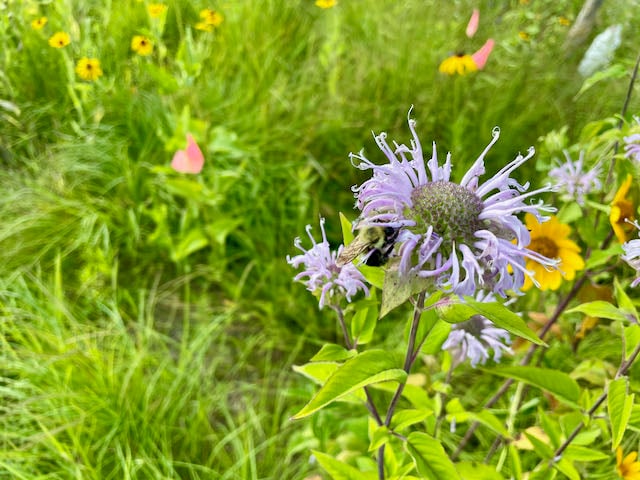

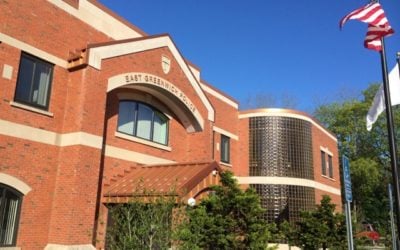
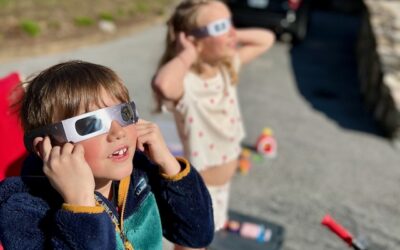
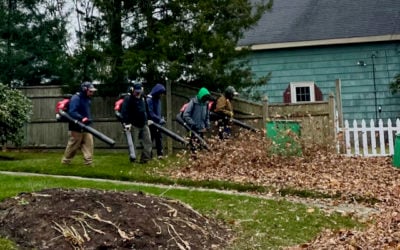
 Subscribe
Subscribe
A great contribution to our local conservation efforts. Well done! Keep up the good work.
Amazing! Thank you for this article. Maybe there can be a way for more seeds to be shared and everyone can slowly incorporate more plants for our pollinators.
Great article! Frenchtown and Eldredge schools also have native plant gardens on their properties. I didn’t know how to spell joe pye weed!
I guess we need to check on those gardens – maybe in the spring. Feel free to give us a nudge!
Fantastic and informative article about an uplifting story with an increasingly important purpose. I hope it inspires others to do the same where they can. Thank you for this, it is excellent.